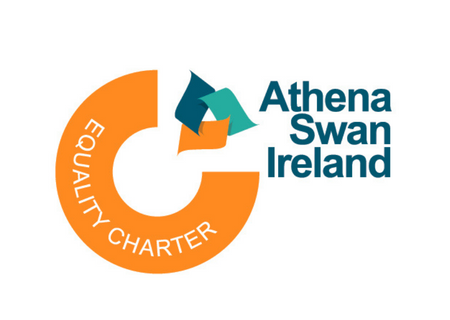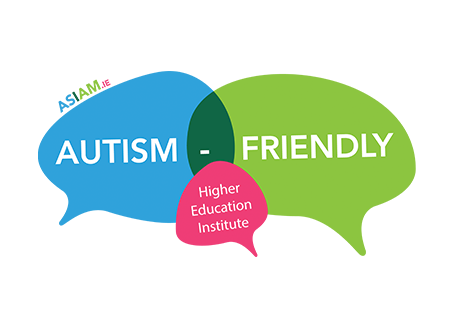
This blog is written by Carrie Archer, Programme Director for the microcredentials in Technology Enhanced Learning in the Centre for Education and Lifelong Learning.
In today's classrooms, educators are increasingly turning to technology to support the creation of more productive, engaging, and inclusive learning environments. Learning environments shift, evolve and change all the time. They include our traditional classrooms, but now also include the use of learning management systems and a variety of platforms to facilitate asynchronous learning. They also include virtual classrooms where we engage with learning synchronously, but from locations all over the world and across time zones. Regardless of context, the learning environment or the discipline you work in, learner variability is a given.
In this post, we explore ten ways technology can positively influence and shape a more inclusive, flexible and responsive learning environment, with practical benefits that can facilitate equitable opportunities for all. How can technology facilitate inclusive learning environments?
1. It boosts engagement through interactive learning tools
No one likes to sit back passively in class. Learning is increased through active engagement. Incorporating interactive learning tools such as interactive whiteboards, quizzes, and gamification provides students with options for sustaining their effort and persistence. Using such tools encourages active participation and not only enhances engagement but can also build a sense of belonging and community among students.
2. It fosters inclusivity with accessible educational materials (AEM)
Using digital tools to create multimedia resources such as captioned videos, infographics, and transcripts provides varied options for perception. By offering different formats for accessing content, educators can ensure that all learners, regardless of ability or how they prefer to engage, have equitable opportunities to understand and interact with learning materials. By making sure materials are designed with accessibility at the outset, we can ensure all of our students can access them.
3. It enables personalised learning experiences for learners with disabilities
Adaptive technologies, technologies specifically designed to cater for the needs of disabled students, can provide real-time feedback and tailored content that meets individual learner needs. For example, screen readers, text to speech software and closed captioning software make learning possible for learners with specific disabilities.
4. It facilitates efficient and effective assessment and feedback
Assessment platforms can streamline grading and feedback for summative assessment. However, there are many technologies that can provide instant feedback, for example quizzes, which supports student self-reflection and allows for more regular formative assessment of and as learning.
Educators can use data insights to identify learning gaps, tailor the focus for future classes as well as personalise support for students who may benefit from additional guidance. Integrating technology can offer learners multiple, authentic ways to communicate and express knowledge, competence and skills- moving away from more traditional forms of assessments. Students can create podcasts, videos, blogs, posters and play to their strengths and show us what they know... the possibilities are endless.
5. It builds essential digital skills for the future
From collaborative platforms to digital communication tools, integrating technology in education builds essential digital skills that are invaluable in today’s job market. For learners in tertiary education, these skills boost employability, giving them hands-on experience with tools they’ll encounter in many industries.
6. It encourages collaborative learning beyond classroom walls
Technology facilitates virtual collaboration. It allows students to work together, synchronously or asynchronously, regardless of physical location. Using online platforms to share documents and work streams; using discussion boards to build community and encourage sharing of diverse perspectives- all of these can help students develop strong communication and teamwork skills in the virtual environment. With many companies and industries offering remote and hybrid positions, developing these skills in the classroom prepares students for the reality of many modern workplaces.
7. It supports flexible and remote learning options
Learning management systems (LMS) and online platforms allow students to access resources anytime, anywhere, making learning more flexible and accommodating individual schedules (and preferences!). This flexibility benefits students balancing education with work commitments or family and caring responsibilities; a common reality for many learners.
8. It enhances productivity for educators
As educators, we want our time and energy to go into improving the experiences and outcomes for every learner. In an increasingly admin heavy educational landscape, using technology to automate tasks can free us up for what is most important- learning and teaching. By integrating AI tools for automated grading, attendance tracking, and classroom management, educators can significantly reduce administrative burdens and focus on strategy development.
Choosing and using the correct technology not only streamlines processes but can empower educators to dedicate more time to meaningful planning, collaborating with peers, creativity, and offering personalised support to learners. This enhances our ability to meet the diverse and unique needs of each student.
9. It expands access to global resources and perspectives
Through technology, students and educators alike can connect with global experts, attend virtual field trips, and access a wealth of online resources and expertise. During COVID, this access provided opportunities for educators across the globe to share knowledge and expertise. Using technology to expand access beyond our own classroom doors cultivates global citizenship, providing us all with broader insights into real-world issues and cross-cultural perspectives.
10. Technology supports data-driven decision making
With data tracking and analytics, educators can better understand learning trends, adjust instructional strategies, and make informed decisions that benefit the entire class. This empowers educators to act on evidence and create responsive and targeted interventions that address specific learning needs.
Embracing technology in the classroom brings endless potential for enhancing learning environments. From fostering inclusivity to building essential digital skills, these tools offer powerful ways to support educators and empower students. As technology continues to evolve, its role in education will undoubtedly expand, helping educators create environments that are not only productive but also engaging, accessible, and equitable for all learners.
Microcredentials in Education
If you want to learn more about the why, what and how of integrating technology into your learning environment, we can meet you at your starting point and support you on that journey through our microcredentials:
- Level 9: Certificate in Technology Enhanced Learning and Digital Learning Design
- Level 7: Certificate in Digital Capabilities and the Learner Experience
- Level 7: Certificate in Technologies in Teaching and Learning
- Level 7: Certificate in Technologies in Assessment, Feedback and Learning Support
- Level 6: Certificate in Learning and Technology
.png?width=650&height=366&name=Commonalities%20in%20NCI%20tech%20micros%2024_25%20(1).png)
Applications are open for these courses which will start in January 2025! Join our Online Open Evening on Thursday 5th December to ask our team any questions you have before applying.










